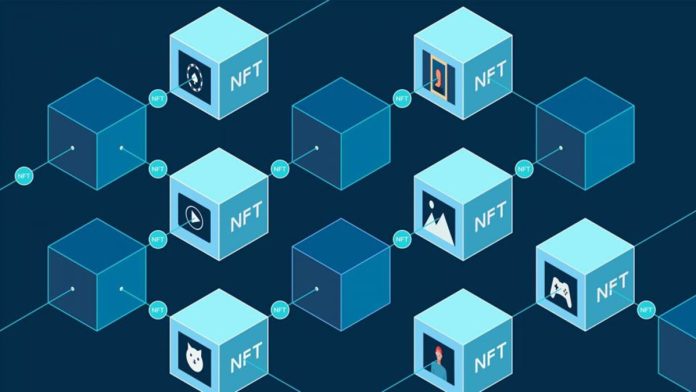Blockchain technology, which began its journey with Bitcoin, has come a long way. What started as a decentralized ledger for cryptocurrency transactions has now evolved into a robust ecosystem with far-reaching applications. Each phase of blockchain development—Blockchain 1.0, 2.0, and 3.0—has addressed specific challenges and introduced groundbreaking innovations.
Now, as we stand on the threshold of Blockchain 4.0, it’s time to explore how far we’ve come and where this technology is headed. Will Blockchain 4.0 unlock mass-market potential, or will it simply improve existing systems? Let’s take a closer look.
Blockchain 1.0: How Bitcoin Started a Revolution
In 2008, Bitcoin made its debut, introducing the world to Blockchain 1.0. With its decentralized ledger and immutable nature, Bitcoin offered something revolutionary—a way to transact securely without intermediaries.
Bitcoin didn’t just disrupt financial systems; it sparked a movement. Soon after, the market saw a flood of altcoins (cryptocurrencies other than Bitcoin), each with unique use cases. Today, there are over 10,000 altcoins.
But Blockchain 1.0 was just the beginning. Its focus on financial transactions limited its scalability and versatility. Yet, it set the stage for what was to come.
Blockchain 2.0: Smart Contracts Unlock Business Potential
Blockchain 2.0 marked a turning point. Ethereum, introduced in 2015, brought smart contracts—self-executing contracts where terms are written directly into the code.
Smart contracts made business operations more efficient, transparent, and secure. They eliminated intermediaries, reduced costs, and opened the doors to industries like:
– Supply Chain Management: Tracking goods from origin to consumer.
– Healthcare: Securing patient data and automating administrative tasks.
– Real Estate: Simplifying property transactions.
– Gaming: Creating tokenized assets and transparent gameplay.
Ethereum also led to the rise of Blockchain 2.0 companies like Solana, Cardano, and Polygon. However, scalability issues (like slow transaction speeds and high costs) persisted, leading to the next phase: Blockchain 3.0.
Blockchain 3.0: From URLs to Apps
Let me ask you something: How many apps do you have on your phone? And how often do you actually type in a URL versus simply tapping an app?
For me, the answer was eye-opening. I have over 200 apps on my phone, and I use about 20 regularly. That’s the power of apps—they simplify access.
Blockchain 3.0 tapped into this behavior by introducing decentralized applications (dapps). These apps are like the ones on your phone but powered by blockchain. They connect user-friendly interfaces to backend smart contracts hosted on decentralized platforms.
From a technical perspective, Blockchain 3.0 also introduced solutions like sharding and sidechains to improve speed and reduce costs. Yet, challenges like user adoption, interface complexity, and transaction speed remained.
Blockchain 4.0: The Future of Blockchain Technology
Blockchain 4.0 is all about taking blockchain mainstream by focusing on scalability, user adoption, and seamless experiences. Unlike its predecessors, Blockchain 4.0 isn’t just about solving existing problems—it’s about creating entirely new opportunities.
B2B: Transforming Business Operations
Smart companies will use Blockchain 4.0 to scale their enterprise solutions. The focus areas include:
– Interoperability: Seamless communication between different blockchain networks to foster collaboration.
– Speed: Accelerating transactions to match real-time business needs.
– User Experience: Simplifying blockchain tools so they can be adopted across industries.
For instance, logistics companies could automate supply chain operations while ensuring complete transparency.
B2C: Revolutionizing Consumer Experiences
Blockchain 4.0 will also transform how businesses interact with customers by making blockchain-powered services intuitive and accessible.
Potential applications include:
– E-commerce: Faster, fraud-proof transactions with automated smart contract fulfillment.
– Gaming: Decentralized platforms offering fair gameplay and tokenized rewards.
– Content Creation: Transparent revenue sharing for creators, ensuring fair compensation.
– Supply Chain Transparency: Empowering consumers to trace product journeys.
– Digital Identity: Securely managing identities to reduce fraud risks.
– Loyalty Programs: Transparent, blockchain-based reward systems without intermediaries.
A Timeline of Blockchain Evolution
| Year | Milestone |
| 2008 | Bitcoin introduced Blockchain 1.0. |
| 2015 | Ethereum launched Blockchain 2.0 with smart contracts. |
| 2018 | Blockchain 3.0 introduced dapps and scalability solutions. |
| 2024+ | Blockchain 4.0 focuses on mass adoption and interoperability. |
Key Takeaways
- Blockchain 1.0 introduced decentralized finance.
- Blockchain 2.0 brought smart contracts, transforming industries.
- Blockchain 3.0 made blockchain accessible through dapps and scalability innovations.
- Blockchain 4.0 promises mass adoption, interoperability, and new applications.
If you’re ready to strategize and create enterprise solutions for Blockchain 4.0, let’s connect. Together, we can unlock the full potential of this groundbreaking technology.
Eric Guthrie is a blockchain visionary, trainer, and best-selling author of Blockchain or Die. With expertise in blockchain technology’s evolution and applications, Eric empowers organizations to leverage blockchain for innovation and growth. As the Director of Training Programs for the Government Blockchain Association, Eric designs interactive training programs to demystify blockchain and drive mass adoption.



 Bitcoin
Bitcoin  Ethereum
Ethereum  Tether
Tether  XRP
XRP  Solana
Solana  USDC
USDC  Cardano
Cardano  TRON
TRON  Lido Staked Ether
Lido Staked Ether  Avalanche
Avalanche  Toncoin
Toncoin